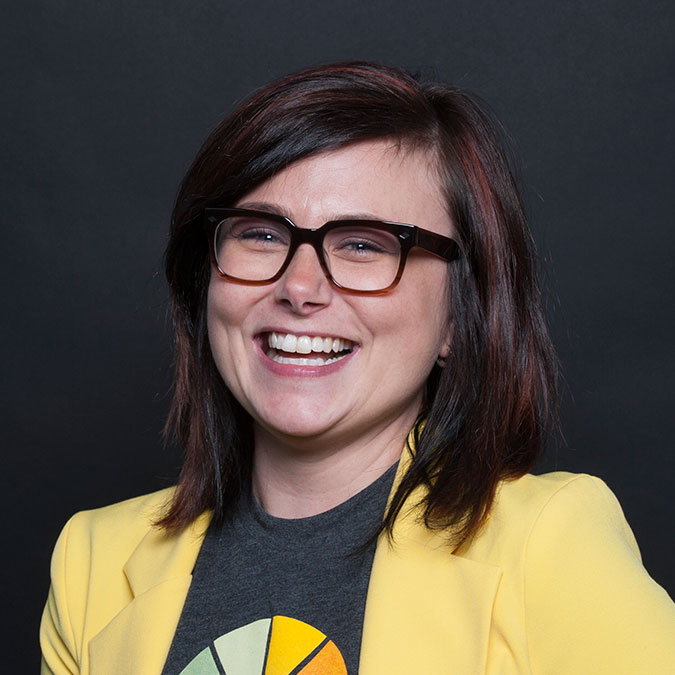Topics:
Marketing StrategySubscribe now and get the latest podcast releases delivered straight to your inbox.
 A simple solution to a complex problem.
A simple solution to a complex problem.
Or....is it a complex solution to a simple problem?
Either way, developing clear messaging for your software solution – or really any product – is considerably hard given the amount of moving pieces.
If you focus too much on features, you'll find yourself fully engaged in a feature battle with competitors. Get too idealistic and you'll lose people before they even know what you do.
Everyone loses.
Luckily we caught up with some of the most successful, well-known entrepreneurs in the software industry to pick their brains on how they approach messaging.
How to ensure clear marketing messaging

Dharmesh Shah
Founder & CTO, HubSpot
@dharmesh
On clarity
Far too many companies make decoding their marketing message a herculean feat.
Consumers shouldn't need a doctorate in business jargon or a masters degree in marketing to decode what you're marketing and selling. Make it simple, make it clear, and make it concise.
I think simplicity is an underrated virtue in marketing. We've always tried to spend less time selling inbound and more time showing people how it can transform their business – hence why Twitter Grader, Website Grader, and Marketing Grader have been such a pillar of our marketing strategy over time.


Justine Jordan
Marketing Director, Litmus
@meladorri
On brevity
Stay the hell away from buzzwords. They’re meaningless.
Cut out unnecessary adjectives and explainer texts.
Write down what you want to say, then go back and take half the words out.
Don’t try to impress your audience, learn the terminology that they use in their lives and mirror it.
If you talk like them, you’re much more relatable.
On new user acquisition
We try to lower the “time to wow,” the amount of time it takes you to get into our product and be impressed. It would only take two minutes for you to visit our website, check out the product, and be wowed by it.
Rather than speaking in buzzwords, showing vague screenshots, or requiring you to contact someone for a demo, we remove all friction and barriers.
Build a product you’re proud of and let people use it.


Neil Patel
Cofounder, KISSmetrics & CrazyEgg
@neilpatel
On feedback
For us it comes down to surveying.
We want to find out what people want to learn, what makes them confused, why they signed up for the product, and what they were hoping it would solve.
We also did a ton of A/B testing to find out the right messaging.
We continue to get feedback from our customers and even potential customers to find out how we can make things better.
It’s all about learning from them because at the end of the day you’re so involved in the grind that you’re not going to see everything in the same way that a potential customer would.


Meghan Keaney Anderson
Product Marketing, HubSpot
@meghkeaney
On discovery
At HubSpot, the problem our prospects face is pretty clear cut, but the software we’ve built is very expansive. Our problem was, “how do we explain everything that it does?”
We realized that you don’t have to do that.
It should be a process of discovery over time. Start with something easy to understand, and later you layer on the other features. If you push everything up front, it’s overwhelming.
Most software you have a relationship with, so the users understanding grows and so does the messaging. You start simple, we can solve this problem for you.
Our product has been a living, breathing thing. And as it grows, you get insight into what’s working and what’s resonating with the audience. It always starts with the user.
When we’re going to launch a new product or feature, we start with a research phase with message testing. We ask very simple questions like “tell us about your experience, points of friction, and biggest challenge.”
We listen to how they explain their problems and root our explanation in those problems. It really starts with knowing who you’re talking to.


Magdalena Georgieva
Product Manager, HubSpot
@mgieva
On collaboration
Simple messaging starts from the design process. As we brainstorm and whiteboard a flow, we are very focused on simplicity.
We go through a few rounds of user testing with existing customers across various lifecycle stages. We also bring in people from our support and services teams to test a product update and give feedback in an informal way. It's fascinating the different perspectives they bring in!
The support rep will envision herself explaining this to a customer on the phone and will ask us a question related to that. A consultant, on the other hand, will think about the product update from a best practices standpoint and ask how that fits in with recommended strategies.
In short, we collaborate early on and that helps us keep things simpler, more consistent, and inform the rest of the organization so they can be on the same page with product when an update is rolled out.
We interviewed a dozen of the most successful entrepreneurs in software. Fill out the form below to access the full guide.


Order Your Copy of Marcus Sheridan's New Book — Endless Customers!

